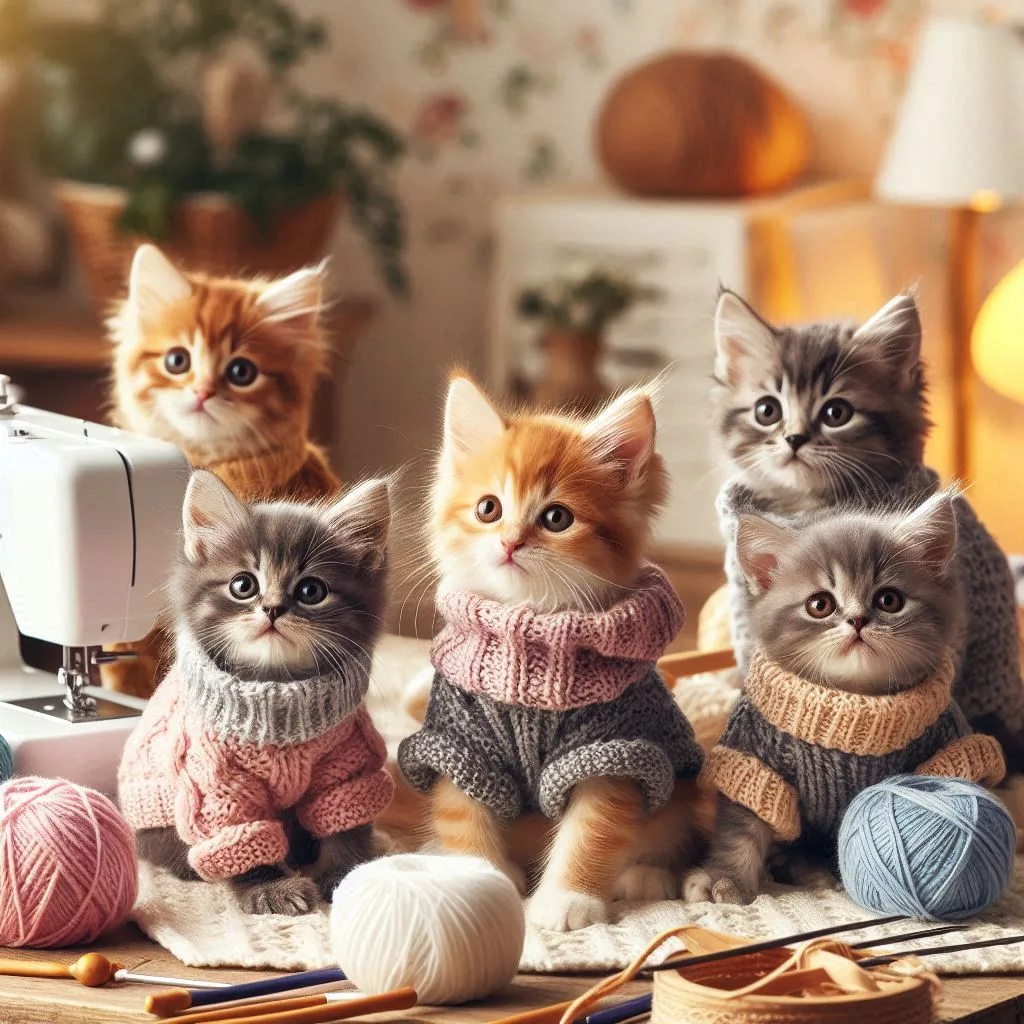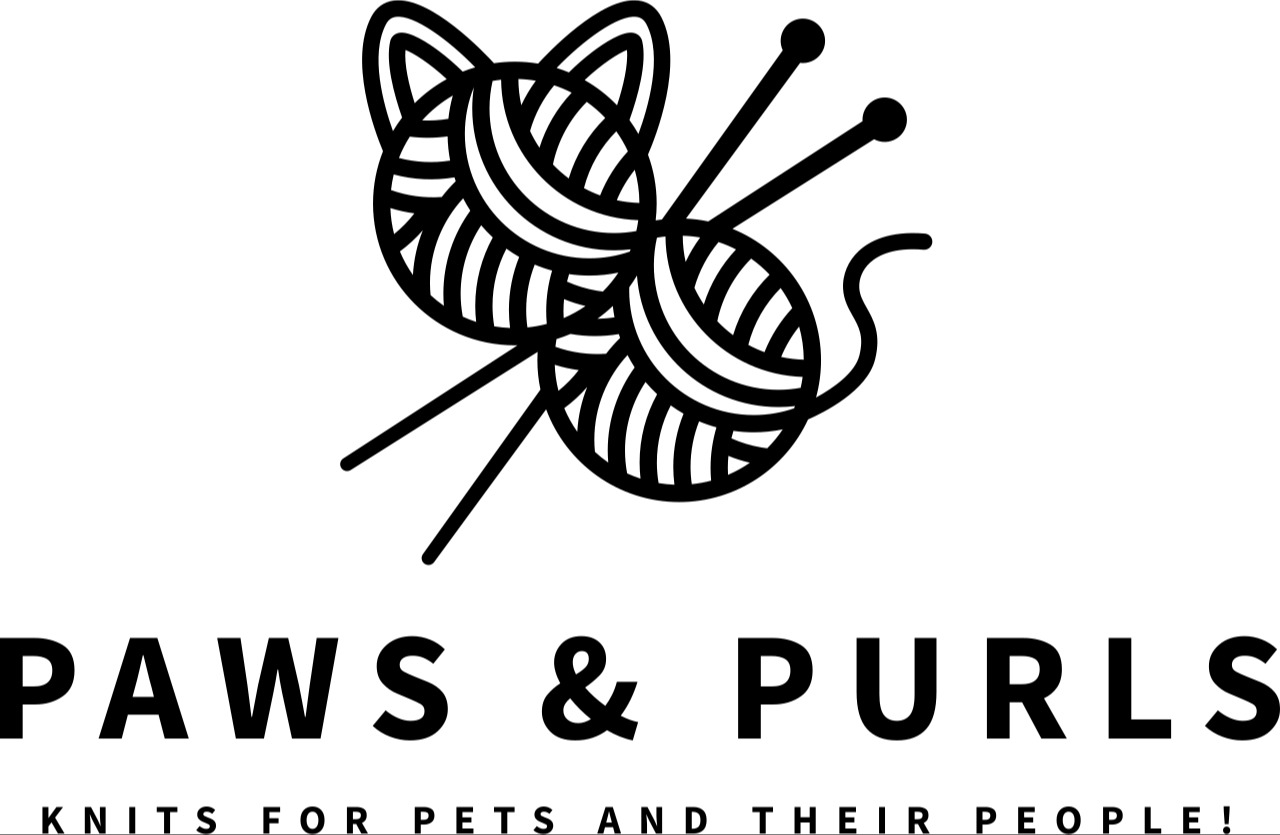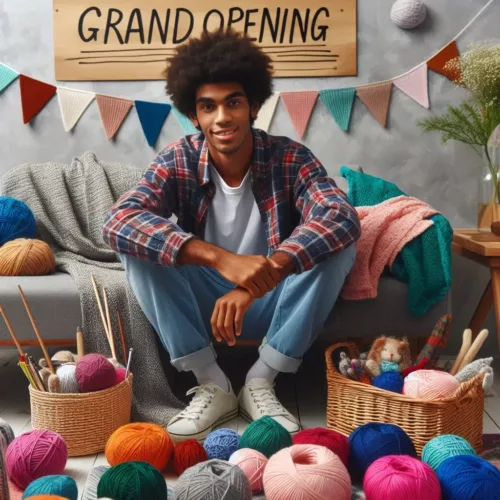Starting strong means finding a niche that suits your passion and stands out in the market. When it comes to a pet knitting business, there are plenty of unique paths you can take.
First, decide on the types of products that fascinate you. Do you love crafting little sweaters that keep pets cozy during chilly nights? Or maybe you’re all about fun toys that keep those playful paws busy. Blankets are another great option—comforting and practical. Don’t forget about accessories like collars and leashes; these can bring a stylish touch to everyday pet gear.
Next, think about which pets you want to focus on. Are you a dog person, a cat lover, or do you have a soft spot for small animals like rabbits? Narrowing down the type of pets you cater to can help define your brand and attract a loyal customer base. Each pet type comes with its own set of design and material considerations. For instance, dogs might need more durable sweaters, while cats might prefer softer, more flexible materials.
Once you’ve figured out what products and pets spark your interest, conduct some research. Look at existing businesses and see what they offer. Are there many competitors in your chosen niche, or is there room for something fresh? This research phase is essential—it helps you understand what’s already out there and where you can introduce unique, in-demand items.
Finding your niche isn’t just about what you love to make; it’s also about meeting the needs of your potential customers. Speak to pet owners, visit pet shops, or join online pet communities to get a sense of what products are in demand. This feedback can guide your product development and help ensure your creations don’t just look good but also serve a purpose.
In summary, pinpointing your niche involves a mix of passion and practicality. Choose products you love to create, focus on particular pets to cater to, and understand what’s already out there. By doing this, you’ll be on the right track to setting a strong foundation for your pet knitting business.
Market Research
Knowing your market is key to success. Before jumping into creating products, it’s vital to understand who you’re selling to and what they need. First, take a close look at existing businesses in the pet knitting space. What products are they offering? How do they price their items? Study their strengths and weaknesses to figure out where you can do better or fill a gap.

Understanding your target audience is another critical step. Are you aiming to sell directly to pet owners, or do you want to partner with pet shops? Perhaps you’d prefer to reach online communities where pet lovers gather. Each group has different needs and preferences. For instance, pet shops might look for wholesale opportunities, while individual pet owners are more likely to appreciate custom, one-of-a-kind items.
Social media is a goldmine for this kind of research. Join pet-related groups, follow influencers in the pet space, and engage with potential customers. Pay attention to what they post about their pets’ needs and preferences. This firsthand information can offer valuable insights into what might sell well and what areas are oversaturated.
Also, consider seasonal trends and events. Holiday-themed items, like Halloween costumes or Christmas sweaters, can be big hits. Keep an eye on trends so you can plan your product releases accordingly.
Gathering this information helps you create products that your customers will love and are willing to buy. It also gives you a clearer picture of the competitive landscape and helps you carve out your unique space in the market. Be thorough with your research; it’s a game-changer when it comes to building and sustaining your business.
Business Planning
Mapping out a solid business plan can turn those creative ideas into a profitable venture. Start by outlining your goals. Are you looking to create a side hustle, or are you aiming for a full-fledged business? Clear goals will help shape your approach and give you something to measure against as you progress.

Next, dig into your target market. You’ve already identified a niche and conducted market research, so put that information to use. Who is your ideal customer? Define their characteristics, spending habits, and what appeals to them. This will guide everything from your product designs to your marketing strategies.
Financial projections might sound daunting, but they’re essential. Calculate your initial costs, including yarn, needles, packaging, and any other materials you’ll need. Don’t forget about potential expenses like website fees, marketing, and shipping. Estimating these costs upfront can prevent unwanted surprises later on.
Pricing strategy is a biggie. Factor in the cost of materials, the time it takes to create each item, and what competitors are charging. You want to be competitive, but also ensure you’re making a profit. Sometimes a premium price can also signal higher quality, so don’t shy away from charging what your work is worth.
Setting milestones keeps you on track. These could be as simple as launching your first product line or reaching a certain number of sales within six months. Milestones provide motivation and a sense of direction. Plus, they give you a way to celebrate your progress along the way.
In summary, taking the time to create a detailed business plan lays a sturdy foundation for your pet knitting business. It helps you stay organized, focused, and prepared, turning what could be an overwhelming process into achievable steps.
Sourcing Materials
Finding the right materials is crucial for the success of your pet knitting business. The quality of the yarn and accessories you use can make a significant difference in the durability and appeal of your products.

First, look for suppliers who offer high-quality yarn. Since your creations will be for pets, prioritize materials that are pet-safe. This means avoiding any harmful dyes or chemicals that could irritate a pet’s skin or fur. It’s worth spending a little extra on top-notch materials, as this will reflect on the quality and longevity of your products.
Eco-friendly and hypoallergenic options are also worth considering. Many pet owners are increasingly concerned about the environment and their pets’ health. Offering products made from eco-friendly or hypoallergenic materials can give you a competitive edge and attract a specific customer base.
Building relationships with reliable suppliers can also be beneficial. Consistent communication ensures you always have the materials you need without delays. Plus, you might even negotiate better prices or get first dibs on new materials.
Finally, don’t forget to keep track of costs. Quality materials might cost more, but they also allow you to charge a higher price for your finished products. Balancing cost and quality is key to maintaining a profitable business while keeping your customers satisfied.
Designing and Creating Products
Creating pet-friendly knitted products means blending creativity with practicality. Start by researching designs that appeal to your target audience. Look at popular patterns, colors, and styles within the pet community. You can find inspiration on platforms like Pinterest, Instagram, and even in pet-related magazines.

Focus on making items that are both stylish and functional. Pets need comfort and durability in their clothing and accessories. Opt for stitch techniques and patterns that enhance the strength and flexibility of the final product. Double-check your yarn choices to ensure they can withstand playtime and frequent wear.
Prototyping is crucial. Before making a batch of any item, create a prototype and test it. If possible, get feedback from pet owners. This will help you refine the product, making necessary adjustments to fit better or last longer. Consider how the item will be used daily and whether it meets the practical needs of pets and their owners.
Attention to detail makes a big difference. From ensuring snug but comfortable fit on those cozy sweaters for dogs to adding playful yet secure elements on toys, these touches set your products apart. Pay attention to the small things, like the types of buttons or fasteners you use, as these need to be safe for pets.
Staying flexible and ready to adapt is a smart move. Trends change, and pet owners’ needs evolve. Keep your finger on the pulse of the pet community. By regularly updating your product line with fresh designs and functionalities, you keep customers coming back for more.
Building Your Brand
Choosing a strong business name and logo can make a big impact. Your name should resonate with pet lovers and be easy to remember. Think about what your brand stands for and try to capture that essence in your name and logo. A playful yet professional approach often works best in this niche.

Developing a cohesive brand identity is more than just a name and logo. Consider the colors, fonts, and overall style you want to represent your brand. Your packaging should be an extension of that identity. Consistent, attractive packaging makes your products instantly recognizable. Plus, thoughtful packaging can enhance the unboxing experience, making customers feel special.
Messaging is key. What story are you telling? Maybe it’s about the love you have for knitting and pets, or perhaps your commitment to using eco-friendly materials. Whatever it is, make sure your message is clear and consistently communicated across all channels. This helps build an emotional connection with your customers.
Think about your brand’s voice. It should reflect your values and resonate with your target audience. Whether it’s quirky, warm, authoritative, or a mix, stay consistent. A strong, relatable brand voice can create trust and loyalty among your customers.
Don’t underestimate the power of storytelling. Share your journey, behind-the-scenes looks, and even the challenges you face. Transparency can make your brand more relatable and trustworthy. Customers love knowing the story behind the products they buy, especially if it involves a passion for pets and crafting.
Setting Up Your Online Presence
Creating an online presence is crucial for any modern business, especially one that caters to a niche market like pet knitting. The first step is building a website or setting up an online shop on platforms like Etsy. Your site should be easy to navigate, visually appealing, and communicate your brand message clearly. High-quality photos of your products are essential; they can make or break a customer’s decision to buy.

Use social media to your advantage. Platforms like Instagram and Facebook are perfect for showcasing your products and building a community. Post regularly, but don’t just push products. Share interesting content like knitting tips, cute pet photos, and behind-the-scenes looks at your creative process. This engages your audience and builds loyalty.
SEO is another critical aspect. This might sound complicated, but it’s about making your site easy to find on search engines. Use relevant keywords in your product descriptions, blog posts, and website headers. This helps people looking for pet knitting products find you more easily.
Engage with your audience by responding to comments and messages promptly. This builds a connection and shows that you value their input. A responsive and interactive online presence can set you apart from competitors who might only use their pages for one-way communication.
Email marketing should not be overlooked. Collect emails through your website by offering a small discount or creating a newsletter. Regularly update your subscribers with new product launches, special offers, or even helpful pet care tips. This keeps your brand at the forefront of their minds.
Effective Marketing Strategies
Promotion is key. Different channels can help you spread the word about your pet knitting business. Social media is a powerful tool for reaching a broad audience. Platforms like Instagram, Facebook, and Pinterest are ideal for sharing product photos, customer testimonials, and behind-the-scenes content. Consider running targeted ads to reach specific groups of pet lovers.
Local events and pet fairs offer an excellent opportunity to showcase your products in person. These venues allow potential customers to see and feel your products, making it easier for them to appreciate the quality and craftsmanship. Plus, face-to-face interactions build strong customer relationships.
Collaborations can significantly boost your visibility. Partnering with pet shops or pet influencers opens up new avenues for exposure. Pet influencers, in particular, have dedicated followers who trust their recommendations. A feature on their social media can inspire their followers to check out your products.
Creating a sense of community around your brand is another effective strategy. Engage with your audience through interactive posts, polls, or contests. Celebrate your customers by sharing their photos of pets in your knitted items. This not only promotes your products but also fosters a sense of belonging among your customers.
Leverage email marketing to keep your audience informed and engaged. Regular newsletters can share new product releases, exclusive discounts, and insightful pet care tips. Offering limited-time offers or early access to new collections can also incentivize purchases.

Networking with other small business owners can provide mutual benefits. Share each other’s businesses through shout-outs or collaborative events. This can introduce your brand to a broader audience while also supporting fellow entrepreneurs.
Customer Engagement and Growth
Keeping your customers happy and engaged is as important as making high-quality products. Excellent customer service can set your business apart from the competition. Respond to queries and feedback promptly. Whether it’s through email, social media, or your website, timely and helpful responses show that you value your customers.
Building relationships goes beyond just selling products. Share tips on caring for pet wearables or offer knitting tutorials for pet owners interested in DIY projects. This adds value for your customers and builds a loyal community.
Consider loyalty programs or referral discounts to reward repeat customers and encourage them to spread the word. A little appreciation can go a long way in turning a one-time buyer into a loyal patron. Personalized notes or small complimentary items can also add a special touch.
Stay responsive to feedback. Encourage customers to leave reviews and listen to their suggestions. This not only improves your products but also shows customers that their opinions matter.

Think about scaling your business as it grows. Keep track of your finances, understanding your expenses, and profits. This can guide your decision-making when it’s time to expand your product line or move into wholesale. Hiring additional help might become necessary as demand increases, so be prepared for that transition.
Lastly, staying updated with trends in the pet industry is crucial. Be open to feedback and ready to adapt to new styles or demands. Embrace change as a path to continuous improvement.
Running a successful pet knitting business is about passion, dedication, and smart strategies. Balancing creativity with business acumen can lead to a flourishing venture. Stay connected with your customers, keep innovating, and enjoy the journey!

